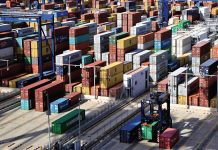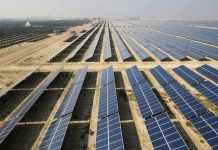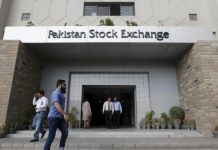ISLAMABAD: The loss of fertile soil, biodiversity as well as traditional seed and knowledge, constitute a grave threat to food security in future.
In the absence of significant soil conservation measures (such as decarbonization, erosion, and chemical pollution), Pakistan may not only suffer nutritional deterioration and loss of vital trace minerals, but also run out of arable land.
Regenerative agriculture is a holistic approach that emphasizes the interconnectedness of farming and the whole ecological system.
Dr Muhammad Hanif, Senior Scientific Officer at the National Agriculture Research Centre (NARC), said while talking to WealthPK that regenerative agriculture helps to restore soil health and fertility while protecting water resources as well as biodiversity.
“Healthier soils are more resistant to the effects of climate change and give us more yield, which can help farmers improve their livelihood,” he said.
“The soil itself has a lot of nutrients which are helpful for crops, but these nutrients get destroyed when we use machines. In order to keep soil fertility, we conduct regenerative agriculture, which is less expensive and gives us more yields,” he said.
Dr Hanif said regenerative farmers often minimize tilling of their land, or forgo tilling altogether. He said the regenerative farmers also seek to reduce or eliminate the use of chemicals, such as pesticides and chemical fertilizers.
“Regenerative agriculture also provides benefits to farmers and environment. Farmers should adopt climate-smart agriculture to enhance their output. Regenerative agriculture is less expensive than industrial agriculture since it reduces the need for machinery, fuel, and human labour. The government should educate farmers to adopt climate-smart agriculture to get high yields and minimize dependence on food imports,” he said.
Sultan Ahmed, a farmer from Punjab province, told WealthPK that farmers must allow nature to improve itself in its own way. Globally, most food is produced through intensive industrial agriculture.
“Deforestation, climate change, irrigation problems, pollutants, soil degradation and waste disposal are some of the environmental problems associated with industrial agriculture,” he pointed out.
“As a means to overcome these challenges, increase farm profitability and lower production costs, I adopted regenerative farming, which does not require ploughing the fields for cultivation,” Sultan said.
“Soil aggregates, or the texture formed inside the soil, keep soil fertility alive when we conduct regenerative agriculture. Another benefit is availability of organic material for crops,” he said.
It will be difficult to feed the world or stop biodiversity loss without protecting and regenerating the soil. Widespread changes in rainfall and temperature patterns threaten agricultural production and increase the vulnerability of people dependent on agriculture for their livelihoods.
The cornerstone of regenerative agriculture is that it “does no harm” to the environment, and also improves it by employing technology that regenerates and renews the soil.
Regenerative agriculture creates healthy soil that can produce high-quality, nutrient-dense food while also improving rather than deteriorating the environment, resulting in productive farms, as well as healthy communities and economies. It’s a dynamic and holistic system that incorporates permaculture and organic farming practices including conservation tillage, cover crops, crop rotation, composting, mobile animal shelters, and pasture cropping to boost food output, farmer income, and most importantly, topsoil.
Regenerative agriculture must be practiced all over the country in order to produce high-quality and nutrient-dense food while simultaneously improving the land.






